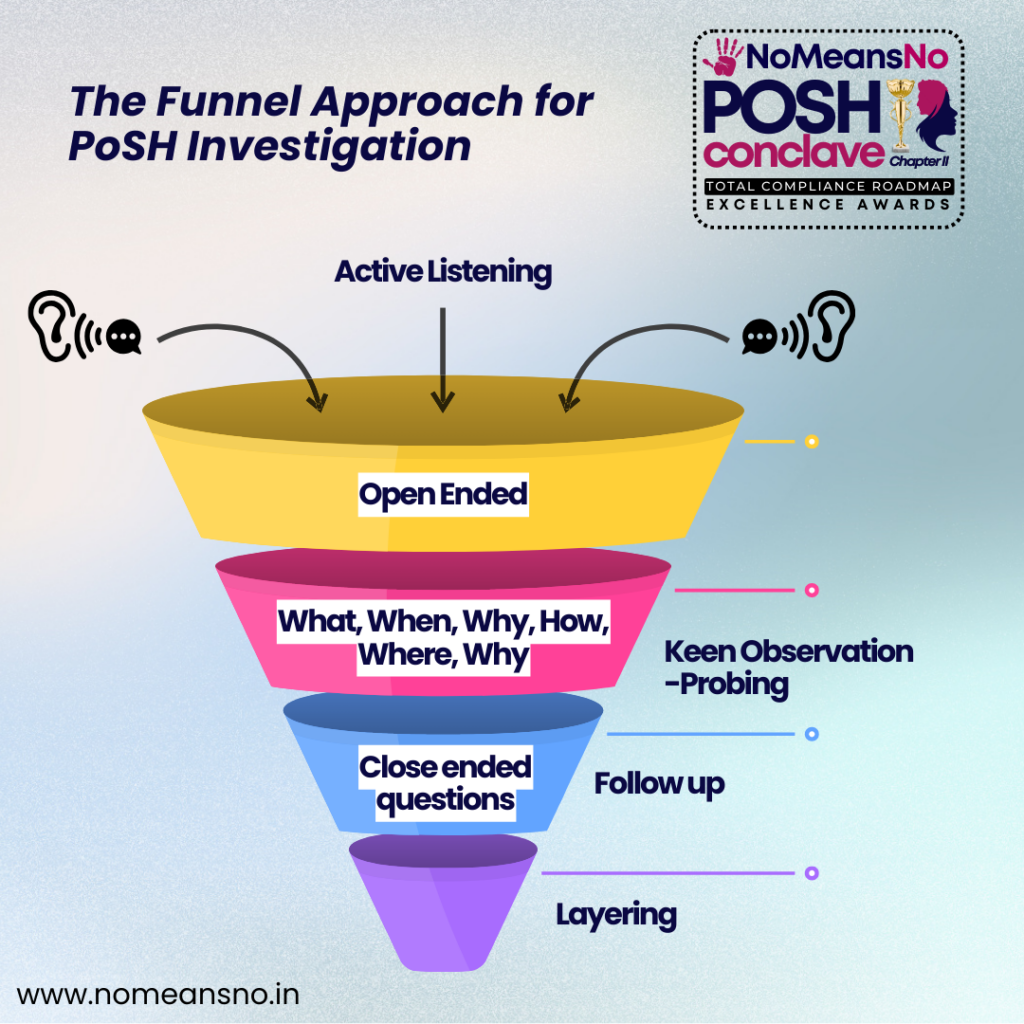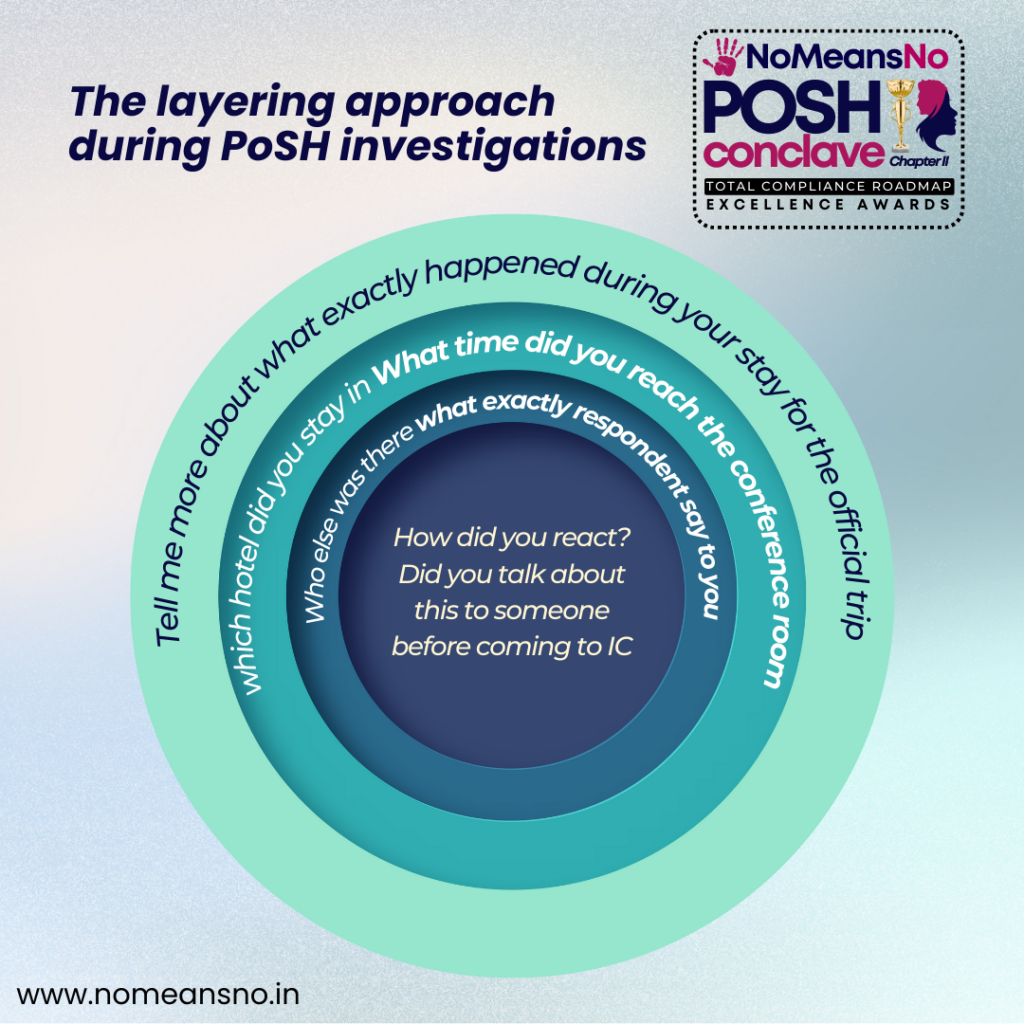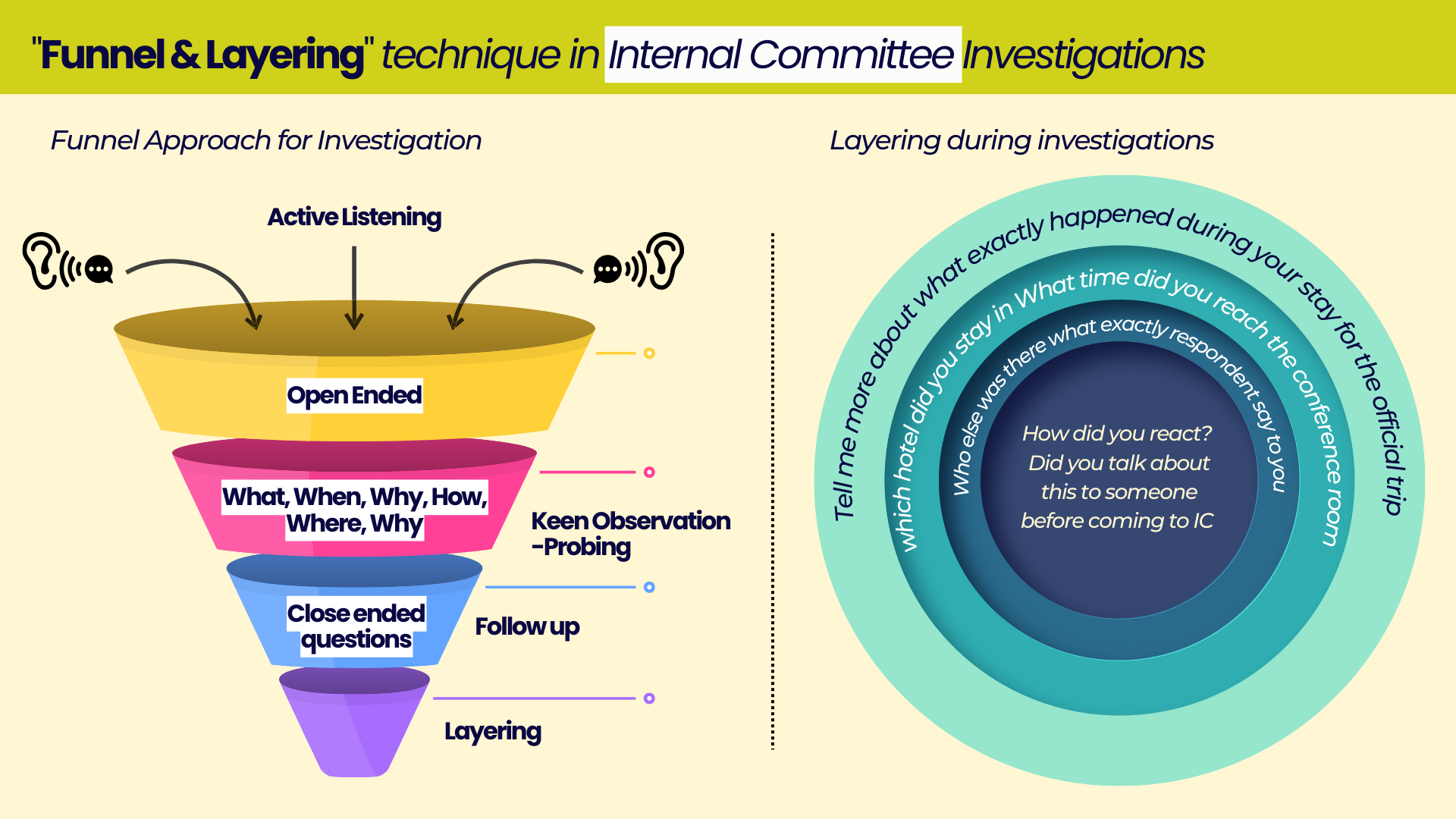🔍 Using the Funnel and Layering Technique in Internal Committee Investigations
During Internal Committee (IC) investigations, the method of questioning is key. While open-ended questions offer broad insights, sometimes we need the precision that closed questions offer. 🎯
The Prevention of Sexual Harassment (PoSH) Act of 2013 mandates companies to establish Internal Committees (ICs) to address complaints of sexual harassment at the workplace. To conduct effective investigations, IC members must possess strong questioning skills. The Funnelling and Layering Technique provides a structured approach to questioning during IC investigations, enabling the collection of comprehensive and accurate information. This article explores the benefits of starting with open-ended questions and then transitioning to more specific inquiries, akin to peeling back layers of an onion, to ensure a balanced and thorough investigation process.
Benefits of starting with open-ended Questions
📘 Rich Information: Open-ended questions encourage respondents to share detailed narratives and insights. This allows ICs to gain a deeper understanding of the incident, potential witnesses, and underlying issues.
🕵️♂️ Detection of Deception: By beginning with open-ended queries, IC members can identify discrepancies or inconsistencies in the responses provided. Sudden changes in narrative or evasive answers may indicate potential deception or withholding of information.
🤔 Non-verbal Cues: During IC investigations, non-verbal cues play a vital role in understanding the emotional state and credibility of the individuals involved. Open-ended questions allow IC members to observe facial expressions, gestures, and body language, which may complement or contradict verbal responses.
📏 Establishing a Baseline: By starting with open-ended questions, IC members can gauge the respondent’s typical behavior and communication style. This baseline can be used to assess changes in their demeanor and responses when more specific and direct questions are posed later in the process.
Example: If someone provides detailed descriptions consistently and suddenly becomes vague, that’s a potential red flag. 🚩

🌀 The Funnel Approach:
The Funnel Approach is a structured questioning technique that involves progressing from broad and open-ended inquiries to more focused and direct questions. This method is analogous to peeling back the layers of an onion, gradually revealing the core information.
Start broad with open-ended questions.
At the initial stage of the investigation, IC members should begin with open-ended questions that encourage respondents to share their accounts freely. These questions should be non-threatening and allow individuals to narrate their experiences in their own words.
Example: “Can you please describe the incident in detail and provide any relevant information or context?”
Progress to more specific and direct questions.
As the investigation advances, IC members should transition to more targeted inquiries to gather specific details and corroborate information obtained during the initial stage. These questions should be clear and concise, requiring straightforward answers.
Example: “Who else was present at the time of the incident, and can you provide their contact details for verification?”
Think of it as peeling back the layers of an onion. 🧅
Remember: The art of questioning during IC investigations requires a balance. It’s about combining the expansiveness of open-ended questions with the precision of direct inquiries. 🤹♂️
Throughout the investigation process, IC members must maintain a balance between open-ended questions that encourage disclosure and direct questions that elicit specific details. This approach ensures thoroughness while minimizing the risk of overwhelming the respondents or causing discomfort.
Keep the process systematic and thorough for comprehensive information gathering. 💼📋

The Funnel and Layering Technique is a valuable tool in conducting Internal Committee investigations under the PoSH Act 2013.
By starting with open-ended questions, IC members can gather rich information, detect potential deception, and observe non-verbal cues.
As the investigation progresses, the transition to more specific inquiries allows for comprehensive information gathering while maintaining a systematic and balanced approach.
Employing this method helps ICs to uncover essential details, ensure fairness in the investigation process, and arrive at informed and just conclusions. By combining the art of questioning with the precision of inquiry, ICs can carry out effective and thorough investigations that uphold the principles of justice and accountability in addressing workplace sexual harassment.






